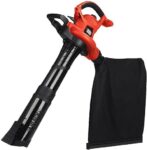
Best Leaf Blower Mulcher and Leaf Blowers with Vacuum Compared
Best Leaf Blower Mulcher and Leaf Blowers with Vacuum offer one of the most efficient ways to handle fall cleanup — modern 3-in-1 machines not only blow leaves into piles, but also vacuum and mulch them into smaller pieces, clearing yards faster with less hauling.
If you’re searching for a practical cleanup tool, today’s options go beyond standard blowers. Many models work as a leaf blower mulcher and double as leaf blowers with vacuum, so you can gather and shred leaves in a single step. This guide highlights two corded 3-in-1 units to help you decide which fits your yard best.
Heavy Duty

A capable corded 3-in-1 that excels at high-speed blowing and aggressive mulching, making fall cleanup faster and reducing bag trips. It’s less consistent as a vacuum — damp leaves, large clusters, or twigs can jam the intake and the supplied bag often needs replacement.
Lightweight Efficiency

A well-balanced, user-friendly Trivac that blends high airflow with easy mode changes and a lightweight build, making yard work less tiring. Its mulching chops reduce bag volume significantly, though it trades top-end airspeed for a wider, consistent airflow.
BLACK+DECKER BV6600 Blower
WORX WG512 Trivac
BLACK+DECKER BV6600 Blower
WORX WG512 Trivac
BLACK+DECKER BV6600 Blower
WORX WG512 Trivac
Epic Leaf Blower Showdown
What matters when choosing a blower‑mulcher‑vacuum
Looking for the best way to handle fall cleanup? Today’s machines are more than simple blowers — many double as leaf blower‑mulchers and even work as vacuums to collect and shred leaves in one go. This section lays out the objective selection criteria used in the comparison and why each matters for everyday yard work.
Performance: airflow, speed, and motor amperage
Airflow (CFM) moves piles; airspeed (MPH) breaks up matted leaves and debris; motor amperage indicates sustained power on corded models. For yards with wide lawns, prioritize higher CFM. For tight, matted areas, higher MPH helps.
Mulching efficiency
Mulch—or shred—ratio shows how much bag space the tool saves. A 16:1 shred ratio means fewer bag trips and lighter hauling, which matters when composting or minimizing curbside bags.
Vacuum collection
Bag capacity and how the intake handles clumps determine practical runtime. Look for easy‑release bags, durable fabric, and impeller designs that resist clogging. Wet leaves and long grass are the usual failure modes.
Ergonomics
Weight, balance, and handle comfort determine how long someone can work without fatigue. Lighter units (<10 lb) suit one‑handed use; well‑balanced designs reduce wrist strain during long raking sessions.
Noise and vibration
Lower dB reduces neighborhood disturbance; low vibration reduces hand fatigue. Both matter when cleanup sessions stretch beyond 20–30 minutes.
Corded limitations and safety
Corded models offer unlimited runtime but need the right extension cord gauge and a GFCI. Built‑in cord retainers and clear cord‑management reduce accidental unplugging and trips.
Reliability / build quality
Metal impellers, robust housings, and solid fasteners limit downtime. Replaceable bags and simple internals mean easier repairs.
Value
Compare price to real features: CFM, shred ratio, bag size, included accessories, and warranty to decide which tradeoffs make sense for their yard.
Head‑to‑head: BLACK+DECKER BV6600 vs WORX WG512 — specs and real‑world performance
A practical, side‑by‑side comparison of the two 12‑amp corded 3‑in‑1 machines. Key specs first, then how those numbers translate to real yardwork.
Quick specs (side‑by‑side)
How those specs perform in the yard
Loose dry leaves — WORX wins for speed of clearing. Its 600 CFM and wide stream moves piles faster, so lawns get cleared with fewer passes.
Damp or compacted leaves — BLACK+DECKER has the edge. The BV6600’s higher top airspeed and metal impeller better breaks up matted clumps before mulching.
Light debris and twigs — Both handle small twigs, but heavy woody debris will clog either bag; the BV6600’s claimed metal fan resists clogging better.
Tight spaces and around shrubs — WORX’s two‑speed control and lighter feel make it easier in flowerbeds; the BV’s variable speed still lets users dial down for delicate areas but may feel bulkier.
User experience, switching, and reliability
BLACK+DECKER: converts between modes simply and has a built‑in cord retainer; users should watch the bag fabric for wear.
WORX: one‑turn dial switches modes with no tube swaps, quick‑release bag reduces stops, and the lighter package is easier for long sessions.
Feature Comparison
Who each model is best for
Looking for the best way to handle fall cleanup? Today’s machines are more than simple blowers — many double as leaf blower mulchers and even work as leaf blowers with vacuum to collect and shred leaves in one go. This section matches common yard tasks and buyer needs to the two models so they can pick the right tool for how and where they work.
Small-to-medium yards and quick, frequent cleanups
If they want fast pile clearing with minimal effort, the WORX WG512 is the better pick. Its 600 CFM wide stream and light ~9 lb package cover ground quickly and feel easier during repeated short sessions. The one-turn dial and quick‑release bag mean fewer interruptions.
Larger yards, matted leaves, and tougher messes
They should pick the BLACK+DECKER BV6600. The higher top airspeed and metal impeller break up dense, wet clumps and resist mulcher clogging, so it performs better on stubborn piles and heavier debris.
Aggressive mulching to reduce bag trips
If they want the fewest trips to the curb, both machines advertise similar 16:1 mulch ratios — but the BV6600’s metal impeller gives it an edge on damp or compacted leaves.
Simpler conversion and ergonomics
If they value tool‑free switching and lighter weight for long sessions, the WG512’s dial‑switch design and lower heft win.
Budget‑minded shoppers
Both models are affordable alternatives to gas units. BLACK+DECKER lists around $130 and often appears in sale windows; the WG512 typically competes in the same price band. Choose the model that matches job type: pick WG512 for quick coverage and comfort, BV6600 for muscle and clog resistance.
Setup, maintenance, and safe operation tips
Assembly and first‑use checklist
They should unpack, read the manual, and assemble tubes and bag with the machine unplugged. Before first use they should:
Safe cord and extension handling
They must use an outdoor‑rated extension cord sized for the run; for long runs choose a heavier gauge (12–14 AWG). They should keep the cord behind them, avoid tight bends, and never pull the tool by the cord. If power cuts out, unplug and inspect before restarting.
Best practices switching to vacuum/mulch and avoiding clogs
They should always power off and unplug before changing modes or removing the tube. To reduce jams:
Emptying and caring for collection bags
They should empty the bag frequently to prevent backpressure; detach and shake contents into a compost bin or curb bag. After use rinse the fabric bag (if washable), air‑dry completely, and inspect seams and zippers for wear.
Blade/mulcher inspection and winter storage
They must unplug before inspecting the impeller or shredder blades. Look for bent, cracked, or loose parts and replace per the manual. For winter storage clean out debris, store indoors in a dry place, and coil the cord loosely.
Troubleshooting common issues
Final verdict: pick based on how and where they’ll use it
Both 12‑amp, corded 3‑in‑1 machines suit homeowners who want a single tool for blowing, vacuuming, and mulching; BLACK+DECKER emerges as the clear pick for most because it delivers straightforward power and a larger collection capacity for longer runs between stops.
Those with larger yards or who prioritize mulching efficiency and fewer bag changes should choose BLACK+DECKER; buyers who prefer maneuverability, easier mode changes, and handling flexibility should pick the WORX. It’s time to upgrade fall cleanup. Order based on yard scale, cord tolerance, and whether mulching or ease wins.













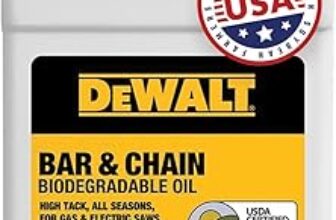
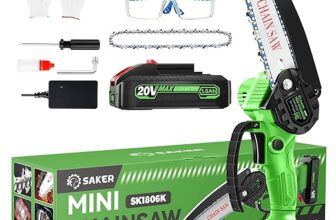
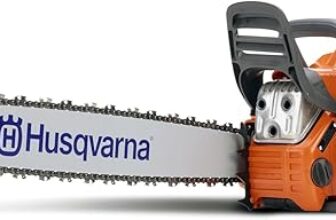
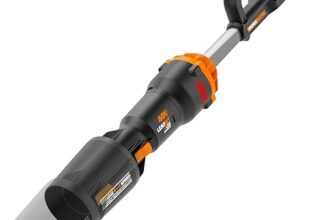

WORX Trivac here — 3-in-1 is kinda true, but the vacuum chokes on damp piles. If you try to suck up big wet clumps it gets clogged. Works great when stuff is dry tho.
Same experience. I usually blow first, let it dry in a sunny spot, then switch to vac. Less clogging that way.
Good point, Evan. Wet leaves are usually best blown away or left to dry a bit before vacuuming. The mulcher will also struggle more with moisture.
Bought the BLACK+DECKER because it was on sale — bang for buck is insane. Not perfect, but does 90% of what I need.
Sales are the best time to grab these. Glad it’s working well for you, Noah!
Same — caught a deal and haven’t regretted it. Value for money.
Tiny nitpick: article didn’t mention bag capacity in liters. I know, nerd move. 😅
Also — is the replacement bag for either model easy to find? I’d rather not buy a whole new unit if the zipper fails in year 2.
Good call, Hannah. We’ll add bag capacity (and links to OEM replacement bags) to the article. Replacement bags are generally available for both models via major retailers or manufacturer parts.
OEM bags are usually listed under replacement parts. If you get a third-party bag, check dimensions — they can vary.
I ordered a replacement bag for my BV6600 from their parts site — took a week but fit perfectly.
Quick practical thing: anyone find one easier to start and switch modes on? My old blower had fiddly latches and I got frustrated switching between blow and vac constantly.
Both models are fairly user-friendly. The BV6600 uses a couple of mechanical switches that are straightforward; the WORX has tool-free attachments which some users prefer for quick swaps.
If you’re switching a lot, I’d recommend keeping everything laid out in order. Saved me from cussing at the latches 😂
WORX for me — attachments click in pretty quickly. BLACK+DECKER felt more like ‘line-it-up and hope’ for a minute.
I picked up the BLACK+DECKER BV6600 last fall and it’s been a workhorse for my tiny yard. Power is great for blowing wet leaves off the patio, and the mulcher reduces the bag volume nicely. Only gripe: the cord can be annoying if you forget to plan outlets 😅
Overall: solid performance for the price.
I have the same model. Pro tip: keep a bright tape on your extension cord so you don’t accidentally run over it. Saved me once!
Thanks for sharing your experience, Maya — glad the BV6600 is holding up. If you want less cord hassle, consider using a long outdoor-rated extension or positioning a power strip on a covered porch.
How loud do you find it? I live in a townhouse and worry about annoying the neighbors.
Okay, serious question: which one is less likely to scare my dog? My pup acts like it’s the leaf-devil and hides every time I go outside. 😂
Also, the mulcher on the WORX looked like it did a better job at shredding leaves in the clips, but I’m paranoid about the promised ’16:1′ or whatever ratios — anyone actually measured pile reduction?
Good question about ratios — we’ll try to get some real-world tests added. 10:1 or 13:1 is probably more realistic in my experience.
Dogs and blowers are a combo — mine whines until I put him inside. In terms of noise, they’re similar but some users report WORX tones slightly higher; ear plugs for you and a cozy room for the pup might help. As for mulching ratios, manufacturers’ numbers are best-case; expect less in wet conditions.
Haha my corgi lies down and stares until I stop. No empirical data on ratios but WORX shredded mine noticeably finer.
My beagle hates both, but WORX seems to have a less ‘motor-growl’ vibe, if that makes sense. Maybe higher pitch = less scary??
I’m torn between the two. I like the BLACK+DECKER for its power, but the WORX looks more versatile with design bits.
Questions I had while reading:
– Does the WORX feel lighter in hand for long use?
– Anyone tried either on damp grass?
– Which has a better collection bag (capacity + durability)?
I wish the article had a quick comparison table for runtime/weight/bag size. Small things like that make a big difference when I have 2 hours of yard work to do.
Thanks, Sarah — great feedback. Short answers: WORX tends to be a touch lighter and more maneuverable; both struggle more with damp material; BAG capacity is model-specific but users often report WORX’s bag feels easier to empty. We’ll add a comparison table in a follow-up.
Appreciate the reports, everyone. We’ll try to add weight/zipper notes in the article edit.
Vouching for the bag comment — WORX’s zipper/closure seems more robust. BLACK+DECKER’s bag is fine but the zipper tore on mine after a season (could’ve been a fluke).
I measured: WORX is about a pound lighter, not huge, but noticeable after 30 mins.
I love lists and I love power tools. A few practical notes from someone who actually tried both this season:
1) Cord vs cord: if you have an outlet in the yard, BV6600’s corded power is unbeatable for constant torque — no throttling like you’d sometimes notice on battery models. But plan the cord path!
2) Bag capacity: WORX had a slightly larger bag in my unit and the zipper is easier to dump. BV6600 filled faster but mulched well.
3) Ergonomics: WORX felt more balanced, BV6600 felt… heavy at the front which made my wrist tired after long sessions.
4) Noise: both loud, wear hearing protection. Seriously.
Hope this helps anyone stuck between the two. I alternate depending on the job — BV6600 for heavy-duty blow jobs (leaves 😂), WORX for lighter tidy-ups.
Totally agree on the balance issue. Switched shoulders a few times to avoid strain.
Do either of them have an extendable handle for taller users? I’m 6’2 and bending gets old.
Fantastic, detailed rundown — appreciate the real-use tips, Priya. We’ll incorporate these notes into the pros/cons section.
Also a good reminder to emphasize hearing protection in the safety section — adding that now.
Loved the humor. ‘Heavy-duty blow jobs’ made my morning 😂 Thanks for the practical notes!
Anyone compared actual mulching performance? BV6600 uses a steel impeller — does that mean it mulches better than WORX’s system? Looking for a model that reduces volume most efficiently.
Steel impeller can help, but design and chute geometry matter too. BV6600’s steel parts are robust, but WORX’s mulching blades are pretty effective at tearing leaves. Real-world results are close; maintenance (keeping blades sharp) makes a big difference.
I sharpened WORX blades (carefully) and got much better mulch — not sure if recommended, but it worked for me.